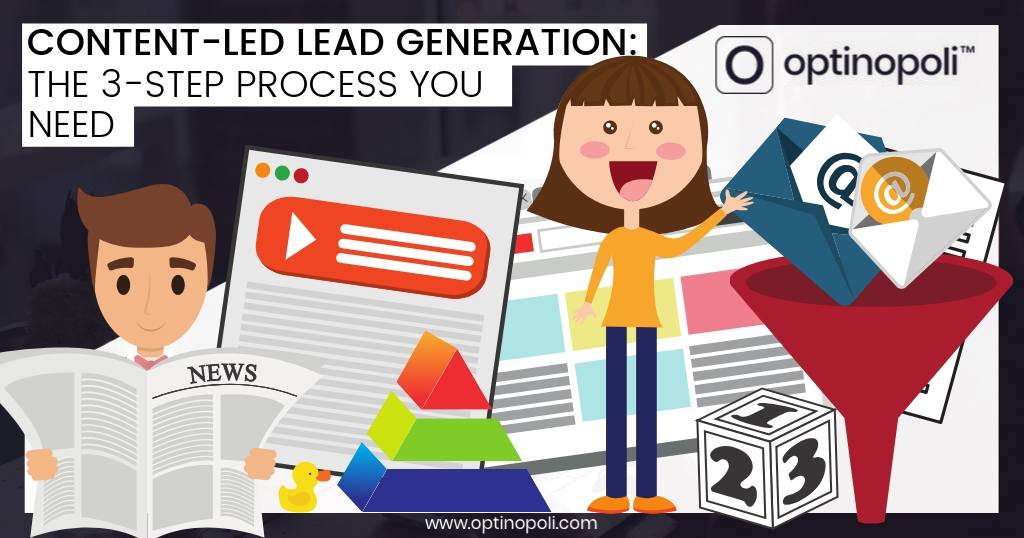
Content-Led Lead Generation: The 3-Step Process You Need
There are seemingly endless techniques and strategies you can use to build your email list and generate leads, many of which are highly effective and can get some astounding results.
We cover most of them here on this blog. Ever noticed a commonality? The majority are content-led. You need great content both to attract subscribers in the first place, and to then communicate with them and build the relationship.
Even advertising for lead generation is far more effective when it's content-led, such as a free book offer.
But unless you get the foundations of your content right first, you're limiting the results you can achieve, regardless of the specific technique you're using, however sophisticated.
Unless you get the foundations of your #content right, you're limiting the results of your #leadgeneration activities via @optinopoliClick To TweetGrowing my list was a painfully slow process even though [my coaching] site contained several sophisticated opt-ins. The website for Women Taking the Lead (WTL) was created ... with a very generic 'Join the Community' opt-in. Within 3 months of launching, the list for WTL had already surpassed the list for [my coaching site].
Jodi Flynn, Luma Coaching
This post shares with you the three steps you need to take to implement a content-led lead generation approach within your business:
- Define your own 'content niche' you can lead.
- Create a single, cornerstone content channel.
- Build your email-based audience.
And it's absolutely foundational to your online marketing activities.
As you'll discover, when grown and properly nurtured, your email-based audience of your content becomes an ever-flowing well of new leads for your business. What's more, because of the increased trust and sense of relationship engendered by the content, they tend to have a much higher value than leads acquired elsewhere.
It works, and is one reason why even large companies are making the content-led approach a priority.
A surprising list of companies – think Amazon, Coca-Cola, Apple and Microsoft – are no longer content with becoming recognised publishers, but are now seeking to be full-fledged media companies too.
Longitude
1. Define a Content Niche You Can Lead
Don't be a "same-as". Being a "same-as" makes you an "also-ran".
When it comes to #content, don't be a same-as. Being a same-as makes you an also-ran. #contentmarketing via @optinopoliClick To TweetInstead, decide to lead.
If you ain't the lead dog the view never changes.
Dan Kennedy
Define for yourself a content niche that puts you as the sole player in it, in your very own category of one. By default, you'll be the leader.
Even if others join you later and compete, as leader, presuming you consolidate your position, you'll get the spoils. They'll be the "also-ran"s.
With such a huge—and ever-increasing—amount of content in circulation, you need to differentiate your content so that it stands out and tells a story that your audience can't get anywhere else.
Just how much content is out there?
This is an infographic from back in 2017, showing the amount of content created online every 60 seconds.
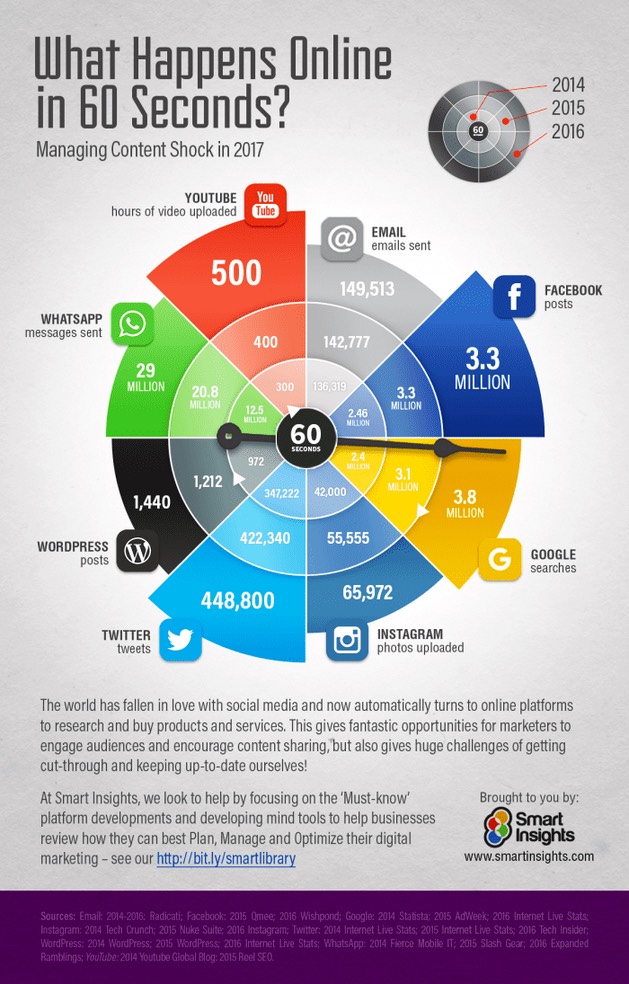
It's likely continued to grow.
According to Wordpress, in July 2019, around 90 million blog posts and pages were published. That's nearly 3 million per day, or over 2,000 per minute.
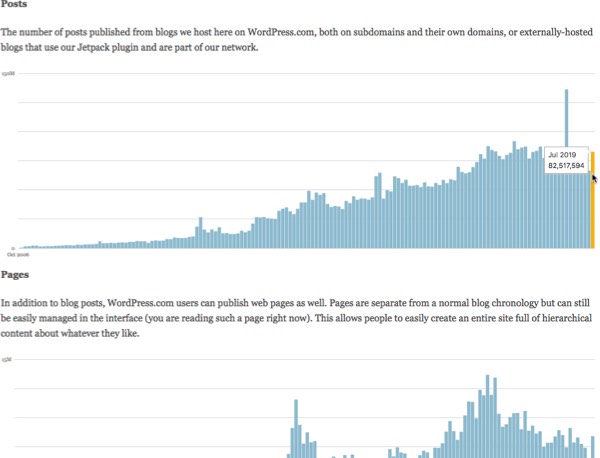
Still think you can get noticed with "same-as" content?
How to define your own content niche
Defining your own content niche is different to defining a USP for the products and services you sell. It's about attracting an audience who are then likely to have an interest in what you sell.
So it needs to be related. But not directly.
Brian Clark started Copyblogger as a blog to teach others about copywriting, actually before he had any idea of what he might sell to his audience.
He now sells the highly successful Rainmaker Digital platform, a SaaS that helps online content creators and marketers (his audience) with marketing and sales.
You don't have to be high-tech, global and digital. It even works for local "bricks and mortar" businesses. Yale Appliance is a regional retail store in Boston, selling home appliance and lighting products and services.

With a strong focus on content that helped and aided their clients in making purchasing decisions, revenue began doubling every year.
How to define your own content niche #contentmarketing #contentstrategy via @optinopoliClick To TweetWe're now talking about a lead generation of over 100,000 leads a year ... instead of just one store, we have two, with a third going up soon. Our revenues are now up to $117 million with better margins.
Steve Sheinkopf, Yale Appliance
To define your own content niche:
- Consider the type of content your customers find most interesting and valuable.
- How can you make that "your own", inputting your own unique insights, experience, business story, operating principles and personality into it?
2. Create a Single Cornerstone Content Channel
Your cornerstone content channel is the core of your online marketing activities.
As the main focus of your content creation activities, it forms your primary online presence from which most other marketing activities can be derived, including:
- Growing your email list.
- Generating leads.
- Communicating with customers.
- Nurturing prospects.
- Driving your SEO.
- Building traffic.
- Feeding your advertising.
Cornerstone content is high-value, foundational content that drives traffic, builds brand awareness, and feeds your funnel.
Elisa Gabbert, Wordstream
It's tempting to feel that, given the multiplicity of content platforms available, you need to try and be everywhere at once. Yet doing so only has a diluting effect. If you spread your resources too thin, and try to be effective across all channels, it’s unlikely you’ll be effective anywhere.
Trying to create original content for YouTube, run a regular podcast, and write separate blog posts each week all at the same time means you’re unlikely to be able to focus properly on any single channel and develop the niche leadership you need to attract your audience.
Your cornerstone content channel is the core of your online marketing activities via @optinopoliClick To TweetInstead, you get better long-term results when you:
- Focus on one type of content, whether that's blog posts, video, podcast episodes, or something else.
- Ensure the content is valuable.
- Deliver it through one content channel, consistently over time.
What has worked since, well, forever, is focusing on one content type, one channel, deliver consistently valuable content, over time. That’s it. That’s what the greatest media companies have done and that’s what you need to do.
Joe Pulizzi, Content Marketing Institute
What about content repurposing?
This doesn't negate the benefits of repurposing your content elsewhere, of which I've long been a keen proponent.
In micro-form, this might mean a blog post is atomized into much smaller content pieces, perhaps just a sentence or two, and shared on social media.
Or the same post can be rewritten into a derivative article that's published on Medium.
Or transformed into a SlideShare, that itself can then be repurposed as a YouTube video.
All can be taken care of relatively easily by others, whether employees or outsourced talent. Doing so allows you to take advantage of the enormous opportunities that developing an audience on third-party platforms with sometimes hundreds of millions of monthly active users can bring.
In some cases, content #repurposing is essential #contentmarketing via @optinopoliClick To TweetIn some cases, such repurposing is essential. If your cornerstone content channel is on a platform you don't fully control—such as a YouTube channel—be prepared for it to disappear at any time.
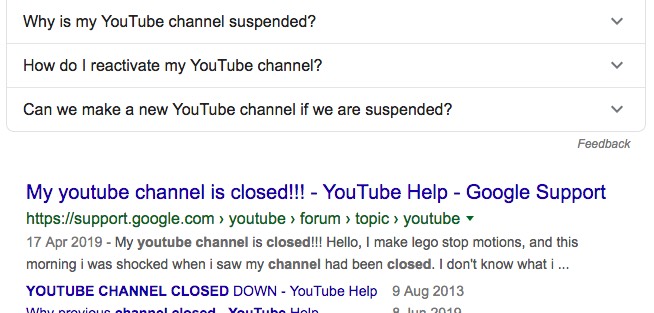
If your cornerstone content channel is not a blog you fully control, it's my firm belief that a blog must be a permanent sidekick which repurposes such content, preferably into text form.
That means if your primary focus is a YouTube channel, each video you publish on YouTube should also form the basis of a new blog post, video at the top and transcripted beneath.
For one, this will do wonders for your SEO and ability to generate email subscribers from your content, via popups and similar. You will build up significant long-term benefits by having the content on your own website.
Secondly, it's an insurance policy. Carefully retain all the original media so if your channel ever disappears or is disrupted, at least your videos can be resurrected by hosting them elsewhere.
Similarly, if you run a podcast, host each episode on a new blog post, player at the top, transcript, or at least show notes, beneath.
As prime example, each episode of John Lee Dumas' podcast, Entrepreneurs on Fire, does exactly that.

Again, someone else can simply take care of this. None of it should distract from that focus on consistently and continuously publishing new, valuable content through your cornerstone content channel, and from which all other content can be derived.
3. Build Your Email-Based Audience
As your cornerstone content channel grows, the number one goal of that content should be to move people onto your email list using a range of opt-in mechanisms.
This is your channel's audience who subscribe to get your content regularly via email.
The number one goal of your cornerstone content channel is to move people onto your #emaillist via @optinopoliClick To TweetThey are not sales leads (yet). They've not shown a specific interest in a particular product or service, and want you to close them. They are interested in your content and want a way to keep receiving it, that's all.
So how does this build revenue?
You are then able to harvest sales leads from email-based content audience. For example, you might offer them a webinar that educates them on something while selling a product or service. Or perhaps a whitepaper that does similar.
Some of your audience will also come through as sales leads quite naturally over time as a result of investigating what else you do, and how else you can help them.
There is a certain heirarchy of relationship with your connections. Followers on social media, whether followers on Twitter or 'subscribers' to a YouTube channel, have a far weaker relationship with you than someone who is on your email list.
For one, you can't communicate personally with social followers. It's impersonal, one-to-many communication.
Secondly, you have no control over those connections and how you communicate with them. A simple update on the platform concerned, or a block on your account for whatever reason, and an ability to communicate with thousands can be seriously damaged or removed completely.
In contrast, with email you're straight in their inbox, communicating with them by name. Email communication beats social, hands down:
- You're 6x more likely to get a click-through from email than you are from Twitter — Campaign Monitor
- 73% of millennials prefer communications from businesses to come via email — Hubspot
- Email acquires 40x more customers than social media — McKinsey & Co
- Email marketing drives more conversions than any other marketing channel, including search and social — Monetate
Email is still the king. It’s the 80% in 80/20. Quite literally. We’re seeing anywhere from x25 to x10 when directly comparing email and social in terms of clicks generated.
Despreneur Magazine
What about content you've repurposed elsewhere, growing (non-email based) audiences on other platforms?
These audiences should be regularly mined for new email subscribers for your content-based audience.
I've already shown how to do this for Twitter (see #4 and #5 in particular). The same principles apply to other social platforms.
For long-form content you might publish on Medium, guest posts on other blogs, and so on, you can also link back to landing pages that give visitors the opportunity to subscribe.
Your repurposed content pieces act as outlying agents, helping to grow the audience for your cornerstone content channel, both by feeding through new subscribers directly, and by growing the digital footprint of your channel as a whole, such as through SEO benefits.
Your #repurposedcontent pieces act as outlying agents for your cornerstone content channel via @optinopoliClick To TweetIn brief...
- Grow your email-based audience by harvesting subscribers from visitors to your cornerstone content channel.
- Harvest sales leads from this audience, such as through webinar and whitepaper offers, that segment them and move them into specific sales-focused follow-up sequences.
... content marketing generates over three times as many leads as outbound marketing and costs a whopping 62% less. And that’s not all: content marketing rakes in conversion rates 6x higher than other methods.
Sujan Patel
To Conclude
To sum up, start by defining your own 'content niche' you can lead by putting yourself in a category of one.
Build a cornerstone content channel through which you publish your content and focus all your content-creating energies, while getting others to repurpose that same content onto other platforms.
Then harvest email subscribers from visitors to that content to grow your email-based audience.
Finally, harvest high-quality, high-value leads from that audience who have grown to trust you and are more predisposed to buy from you as a result.
Content-led lead generation - the 3-step process you need #contentmarketing #emailmarketing via @optinopoliClick To Tweet
steve shaw
Steve Shaw is the CEO of optinopoli™, next-generation lead capture and sales conversion technology—click here for more info.
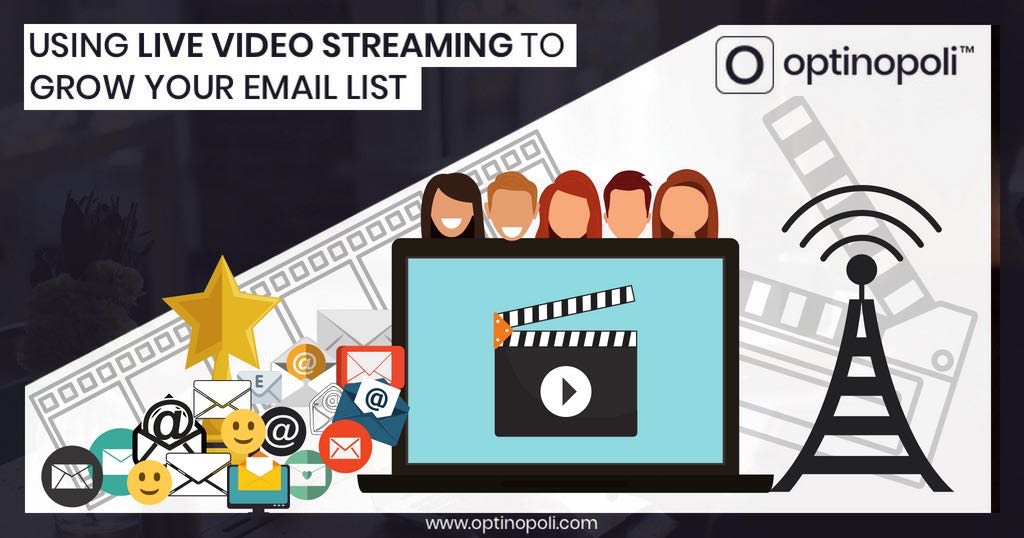
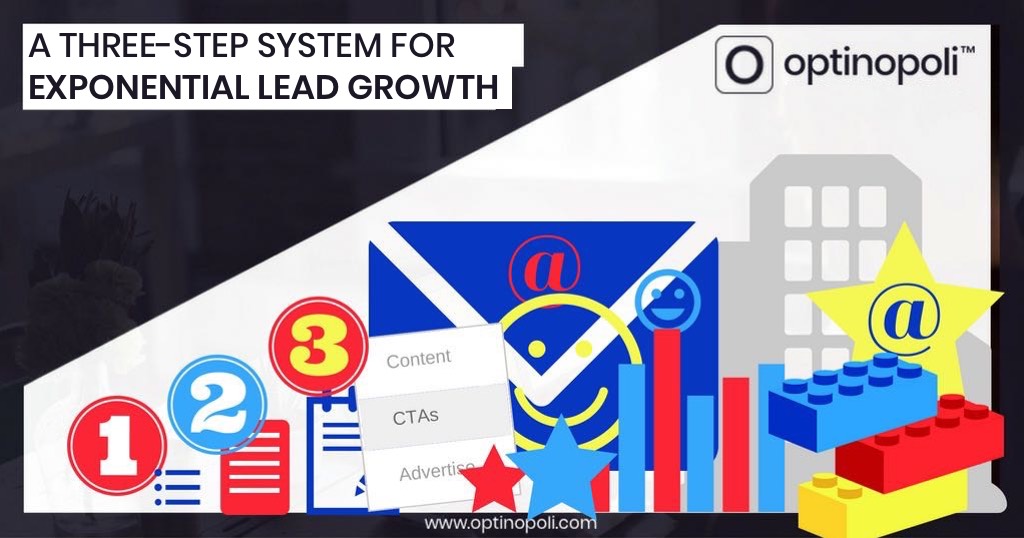
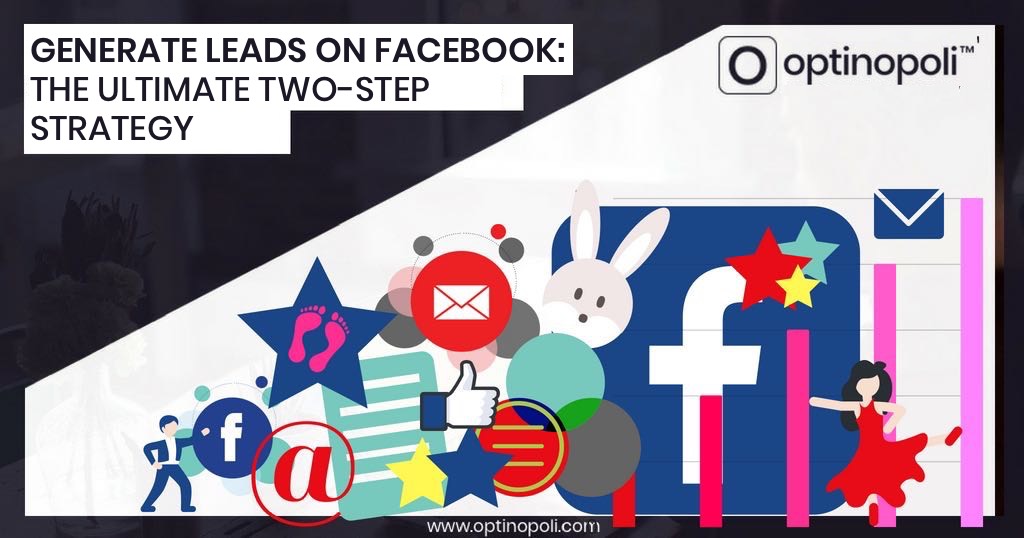
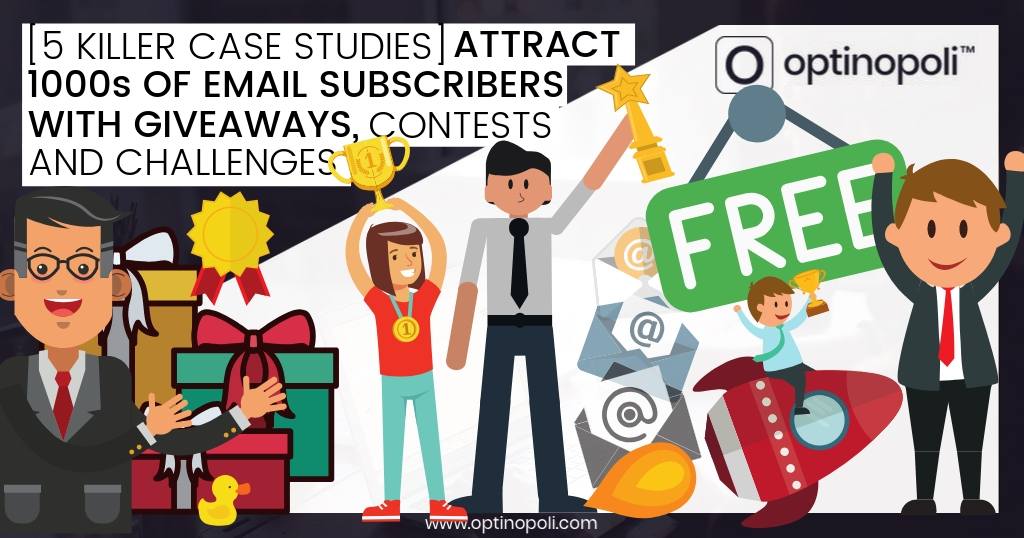

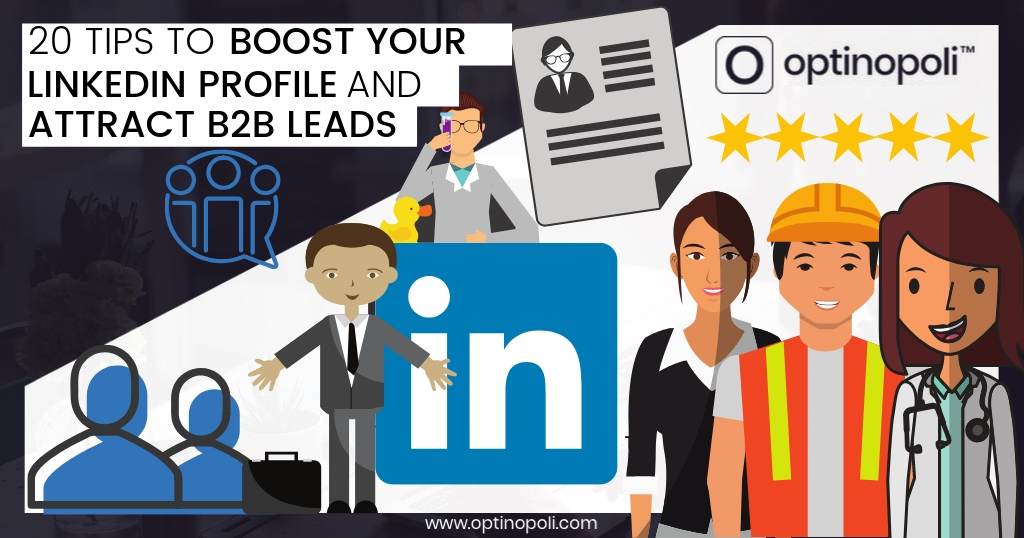
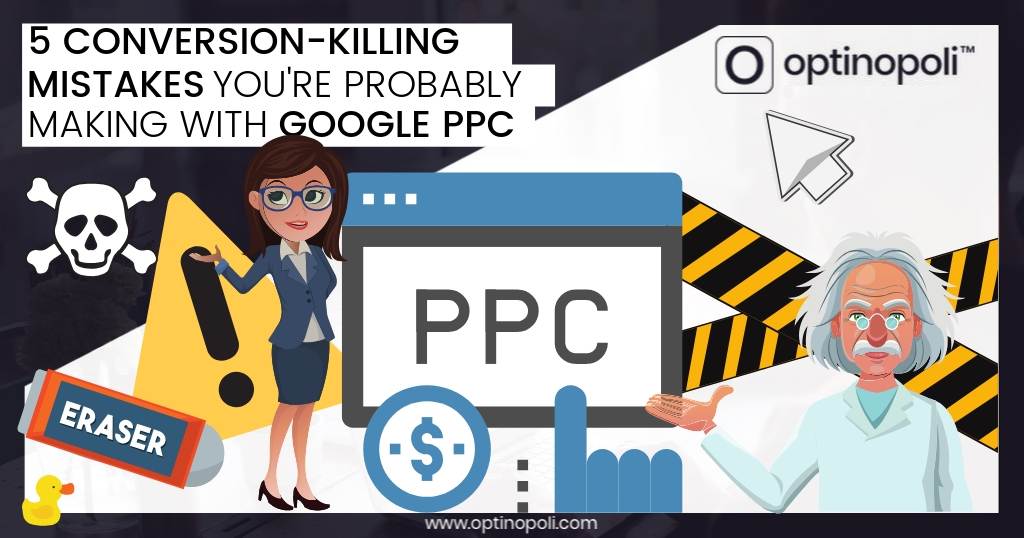
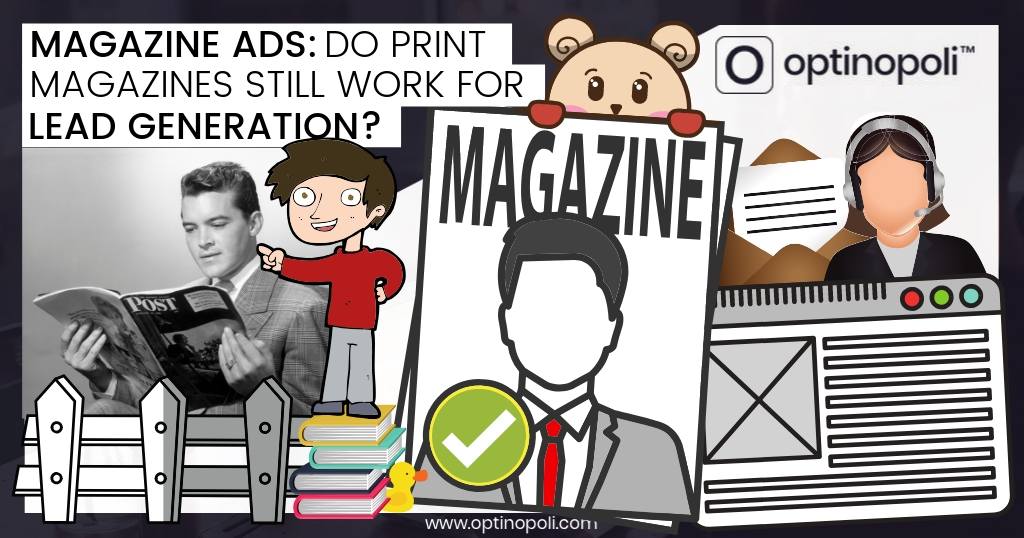
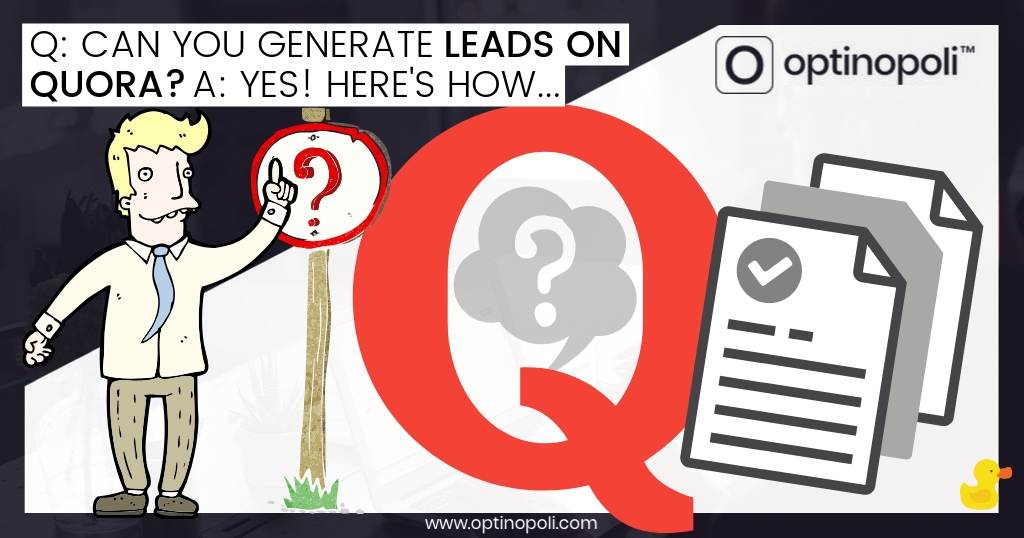
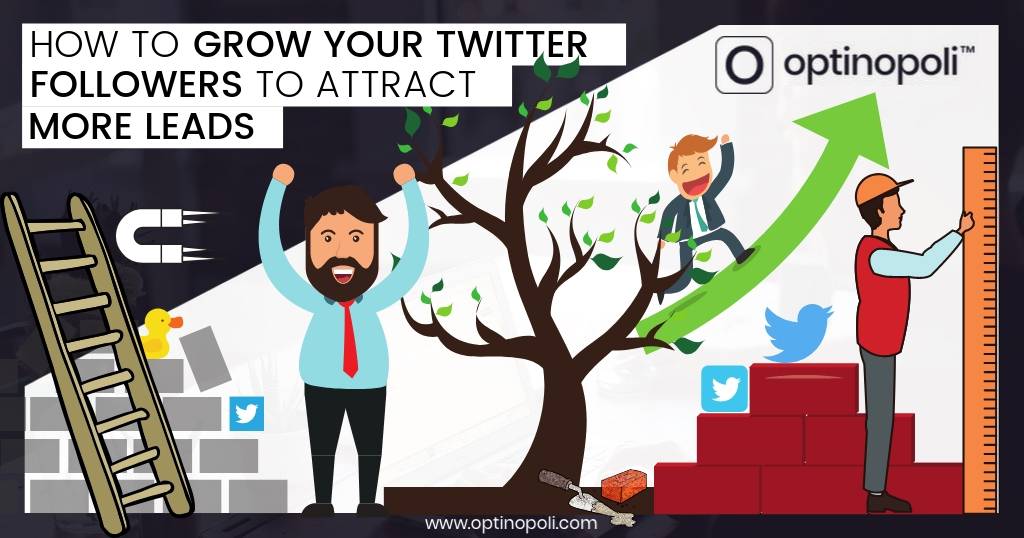
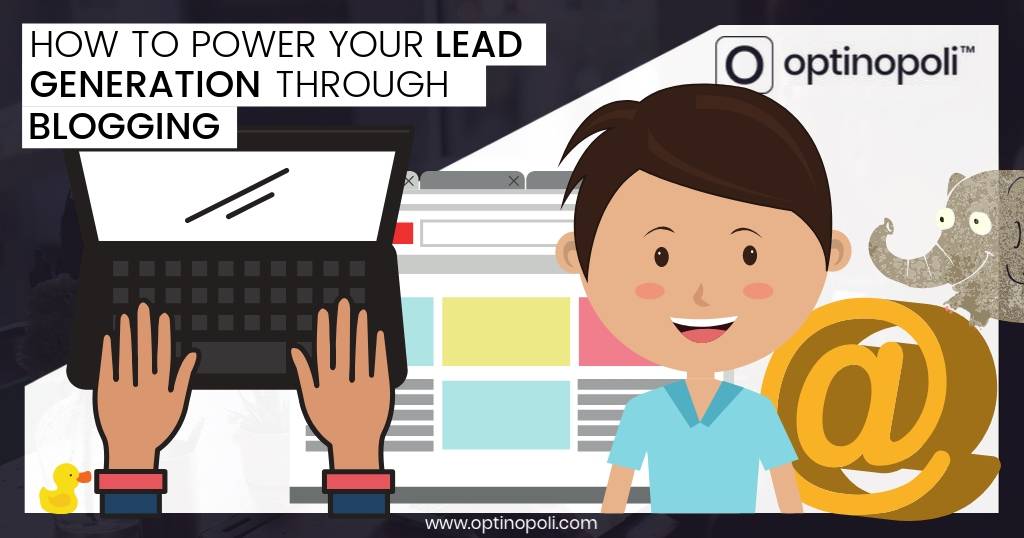
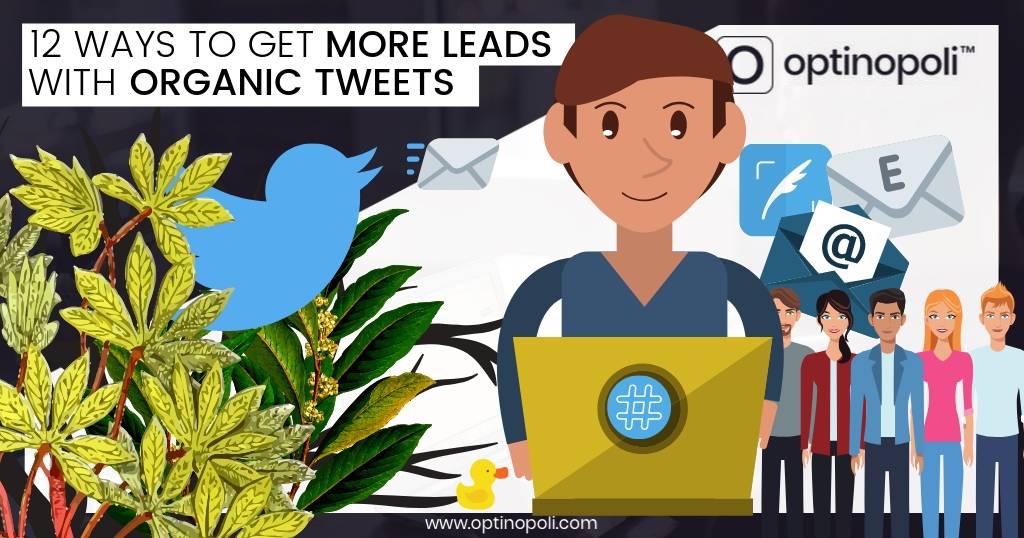
Comments